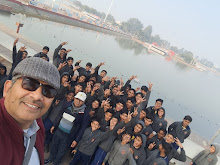CAREER PROSPECTS AND JOB OPPORTUNITIES
After completing Bachelor’s Degree/Diploma in Plastic Engineering, graduates have access to both Government and Private sector jobs. Self employment is another opportunity available in front of them.
KEY RECRUITERS
Firms involved in production, processing and design of plastic products and materials are the prime recruiters. Polymer processing and production units are also known to hire them. Since plastic materials are also used in pharmaceutical sector, plastic engineers may find a job in this sector too.
Labs and research firms involved in research work (on plastic materials and relevant synthetic materials) are also known to hire plastic engineers. Refineries, oil and natural gas firms and petrochemical companies hire them. ONGC, OIL, Government refineries etc are some of the well known Government sector recruiters.
SELF EMPLOYMENT
Self employment is another good opportunity available in front of graduates. If one has access to decent financial resources, he/she may start own small/medium scale plastic products manufacturing firm.
Other than manufacturing, graduates may also indulge in marketing, import and export of general household or special plastic products.
Special plastic products are in much demand these days. Plastic materials possessing specific properties are needed by industries such as automobile manufacturing sector, aviation sector, builders etc. One may tread the path of entrepreneurship, cater to the needs of such industries and reap benefits!
TEACHING AND RESEARCH JOBS
If you are a Masters Degree (M.E./M.Tech. Plastic Engineering) holder, you may work as a lecturer or instructor at relevant engineering/technical institutes. After completing advanced courses like PhD, one may even build a career in the R&D sector associated with the field of plastic engineering.
NATURE OF WORK
Let us just focus on the core plastic manufacturing plant work. A plastic engineer is involved in phases like design, processing and manufacturing of plastic materials and products. In some cases, they are even involved in marketing of these products.
Typical plastic engineer spends most of his/her time supervising or taking part in the design, manufacturing and processing phases. Some of the common job profiles available in front of plastic engineers include-
- Design Specialist
- Quality Control Engineer
- Plant Supervisor
- Plant Manager
- Marketer
What are my Job Prospects in the field of Polymer/Plastic Engineering?
- As waste management is the emerging field, it has created job opportunities for polymer engineers.- They are involved in the following activities:
-- R&D
-- Processing
-- Quality control
-- Technical support
-- Design and manufacture
-- Training
-- Management
-- Tyre companies
-- Fuel refineries
-- Polymer manufacturing
-- Research institutions
- Job opportunities are vast in both public and private sector.
- It is not a known field compared to other areas, but there is great scope for people who are well qualified and trained.
- The research departments of various MNC’s require these professionals.
What are the personal skills required to succeed in the field of Polymer/Plastic Engineering?
- Excellent analytical skills
- Good communication skills
- Ability to work in a team
- Good problem solving skills
- They must be aware in the latest trend of chemical engineering
- You should be creative enough to develop new products
- Must be able to work for long hours
- Must be able to pay attention to minute details
Career in Polymer/Plastic Engineering - options and opportunities -
Introduction
Polymer also termed as Plastic engineering is one of the rapidly growing fields worldwide. Lots of research and experiments has been done over the past to understand this field better and to produce some good results which are beneficial for the country. It combines the knowledge of principles of sciences and technologies to perform various activities on a product to manufacture it. This field is generating lots of engineers which are expected to solve many common problems in life. This field plays very important role in our lives as its applications are versatile and it is applied to many industries, packaging, sports, medicine, perfumes and preservatives, plastic materials etc. Polymer engineering is a growing field and it will take some time for people to show interest in this as well as to understand the complexity of it.
Performance and growth of industry in India
The growth of this industry is been very rapid. It is growing at very fast pace in recent years as the need of engineers are rising the field is becoming very vital and plays very important role in our lives. People with good knowledge or expertise are finding good places in industries such as Petroleum industries, oil industries, polymer industries etc. The demand is rising due to efficient handling of the process of manufacturing the products. It includes various tools which get used for the waste management. So, the performance can be clearly seen but it will take few more years when people will be really comfortable with this career prospect. Indian market is also doing its bit to increase the popularity and making people to come forward to start their career with it.









































